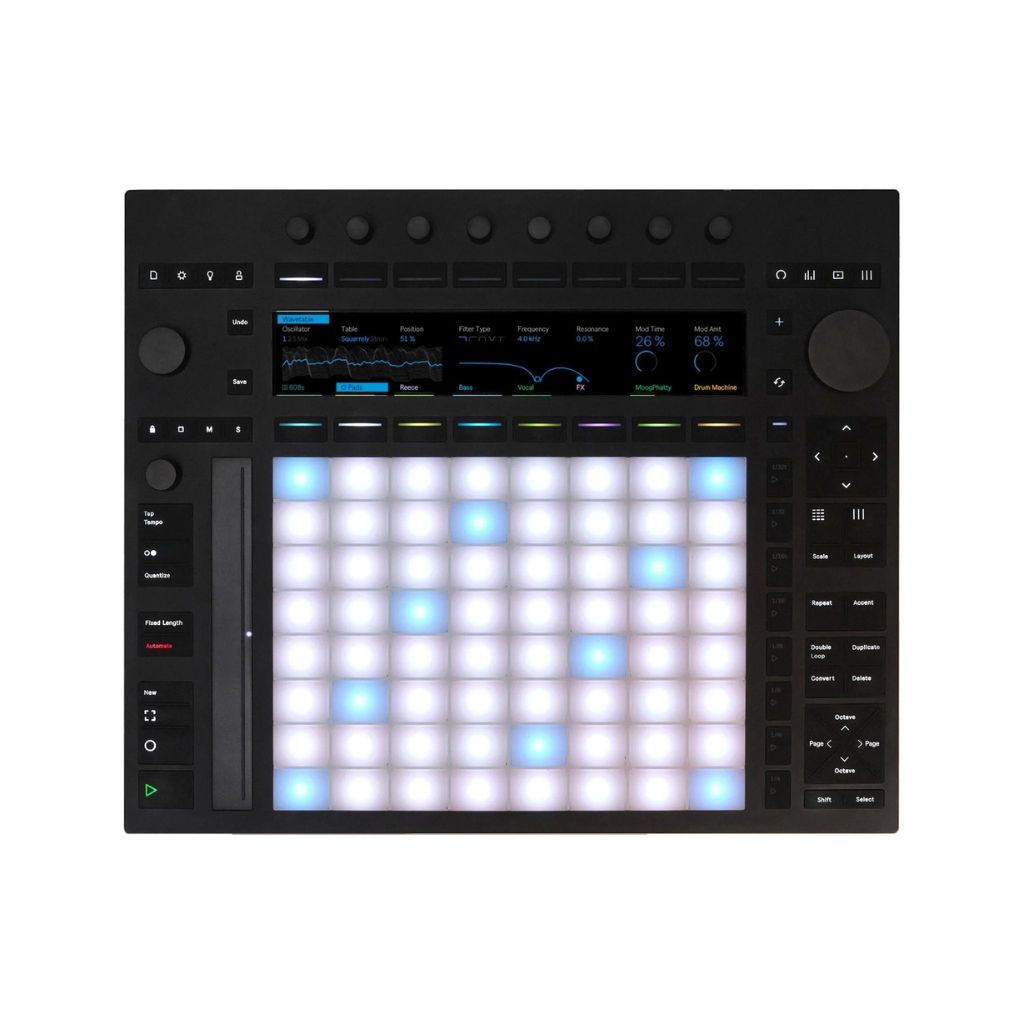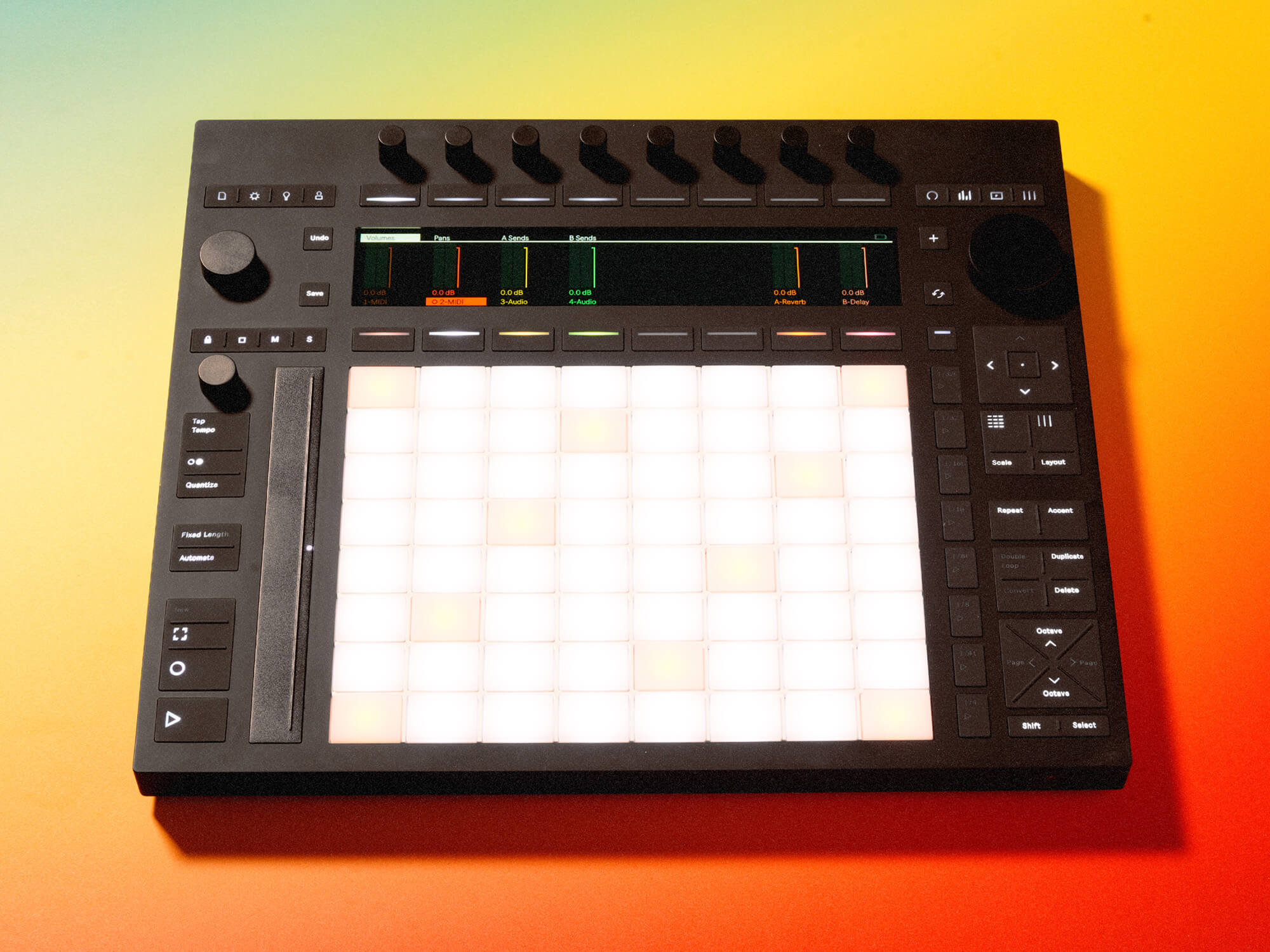
Is Ableton Push 3 really a timeless instrument for a new generation?
Ableton’s Jesse Terry, Beats by J Black and A.Fruit speak with MusicTech about the impact Push is having in studios around the world – and what’s in store for its future
Image: Simon Vinall for MusicTech
Jesse Terry has been dreaming of a standalone Ableton Live device for over a decade. As the brand’s head of hardware, he’s been integral in the development of pivotal Live-powered controllers, such as Akai Pro’s APC 40, Novation’s Launchpad, and, of course, Ableton Push. Through collaboration with colleagues and direction from Ableton’s CEO Gerhard Behles, Jesse and his team have evolved Push into its third iteration, fulfilling the mission of releasing a laptop-free Live instrument. But the work is far from over.
“[Ableton] knows a lot about what people want and we share those feelings,” Jesse says, from his home in Philadelphia, about newly-requested functions for Push 3. “We’re trying to make sure that we don’t go off into 100 different directions and do things half-assed. If we want to [implement] a feature, we want to do it right.”
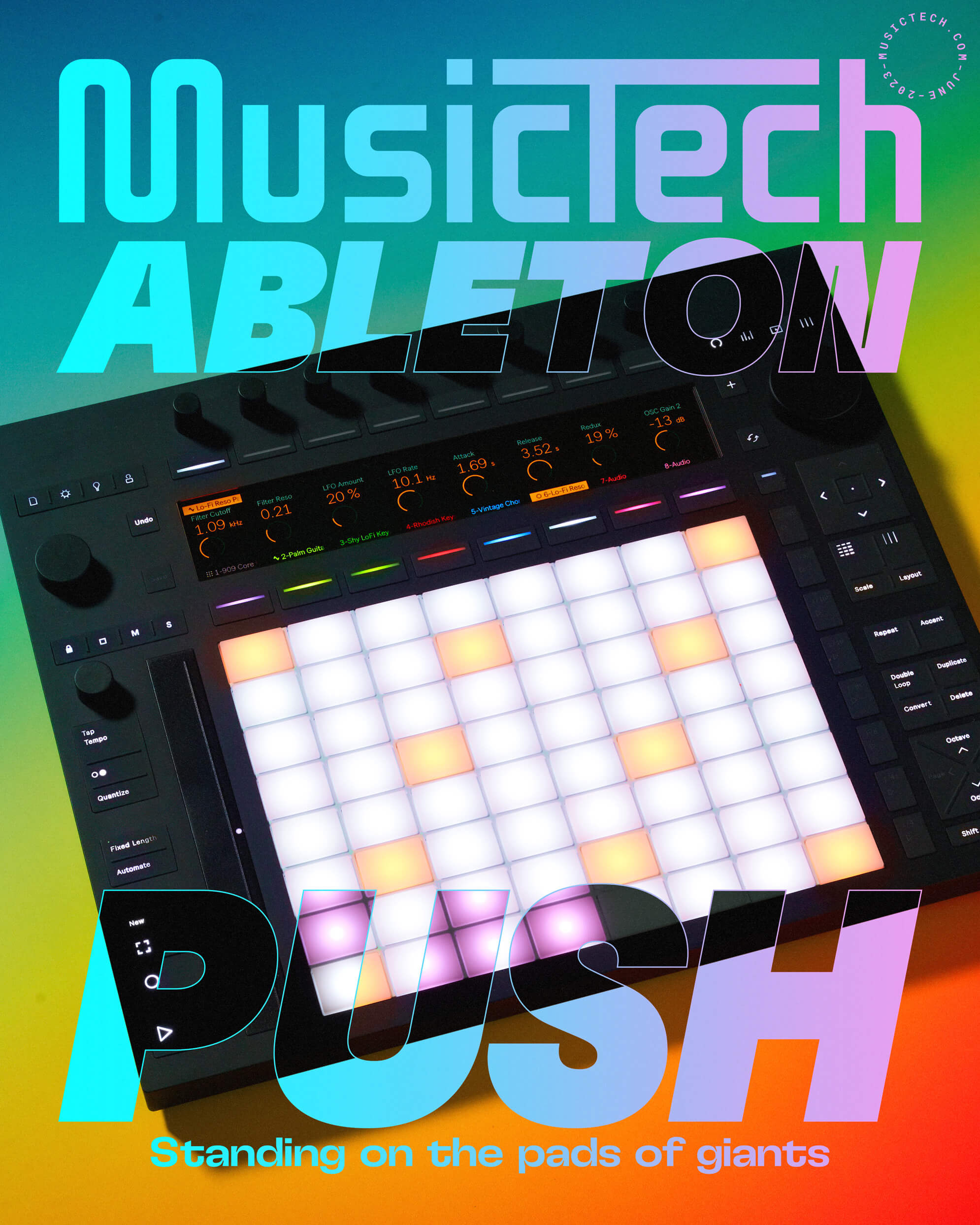
Since its release last month, Ableton Push 3 has mostly attracted positive reactions from the industry. Still, a few producers, such as Bad Snacks and Jeremy Blake, have poked fun at the new instrument, while Weaver Beats says that Push standalone is “overpriced” at $2,000 and that some product choices are a “f*ck you to the customer.” Even gear-reviewing royalty Stimming has his fair share of disappointments, albeit amidst plenty of praise.
Meanwhile, the likes of Beats by J Black and A.Fruit are finding Push to be a boon to their workflow. Atlanta-based producer J Black tells us that Push has strong potential to be his main music-making system, while Barcelona’s A.Fruit says she feels more connected to her music thanks to Push’s tactility. Both artists, and plenty of other beatmakers, cite the new MPE pads, built-in virtual instruments, and the refined sampling system as game-changing features for music makers. And Jesse Terry is finding immense triumph in the journey Ableton has embarked on to reach this point.
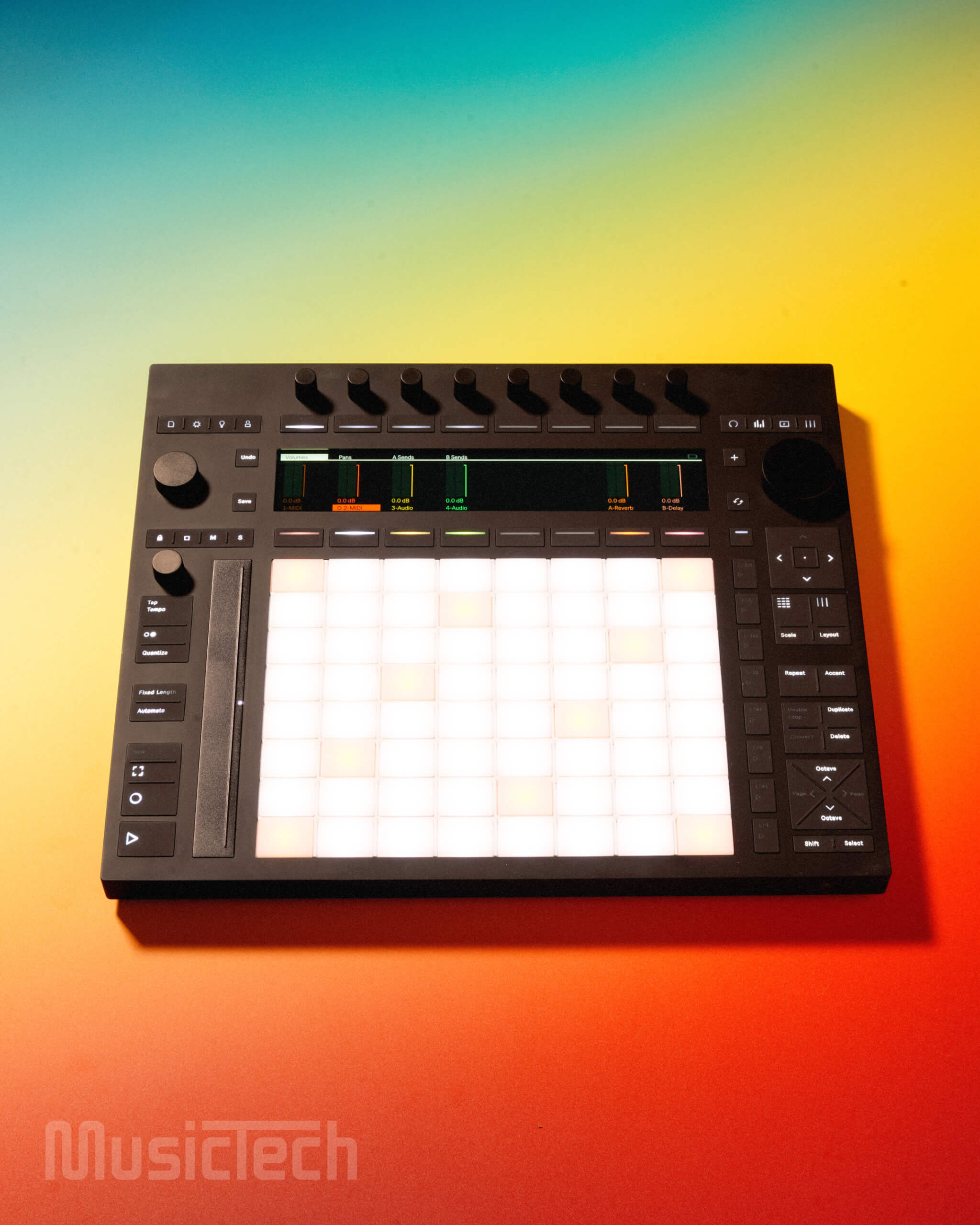
As an avid Akai MPC 2000XL user and former music technology editor at XLR8R magazine, Jesse’s input at Ableton since 2005 has been informed by his connection to sample chopping and beatmaking, and deep knowledge of the music tech market.
After working on the 2009 release of the APC 40, which Ableton made in partnership with Akai, Jesse was inspired by the idea of a complete standalone companion to Live.
“In 2009, I really wanted a Drum Rack controller,” Jesse recalls. “And even then, we wanted it to be standalone. My first sketches were a four-by-four drum controller that was also standalone. That one was too much for us [at Ableton] to bite off in one go. But the idea was there.”
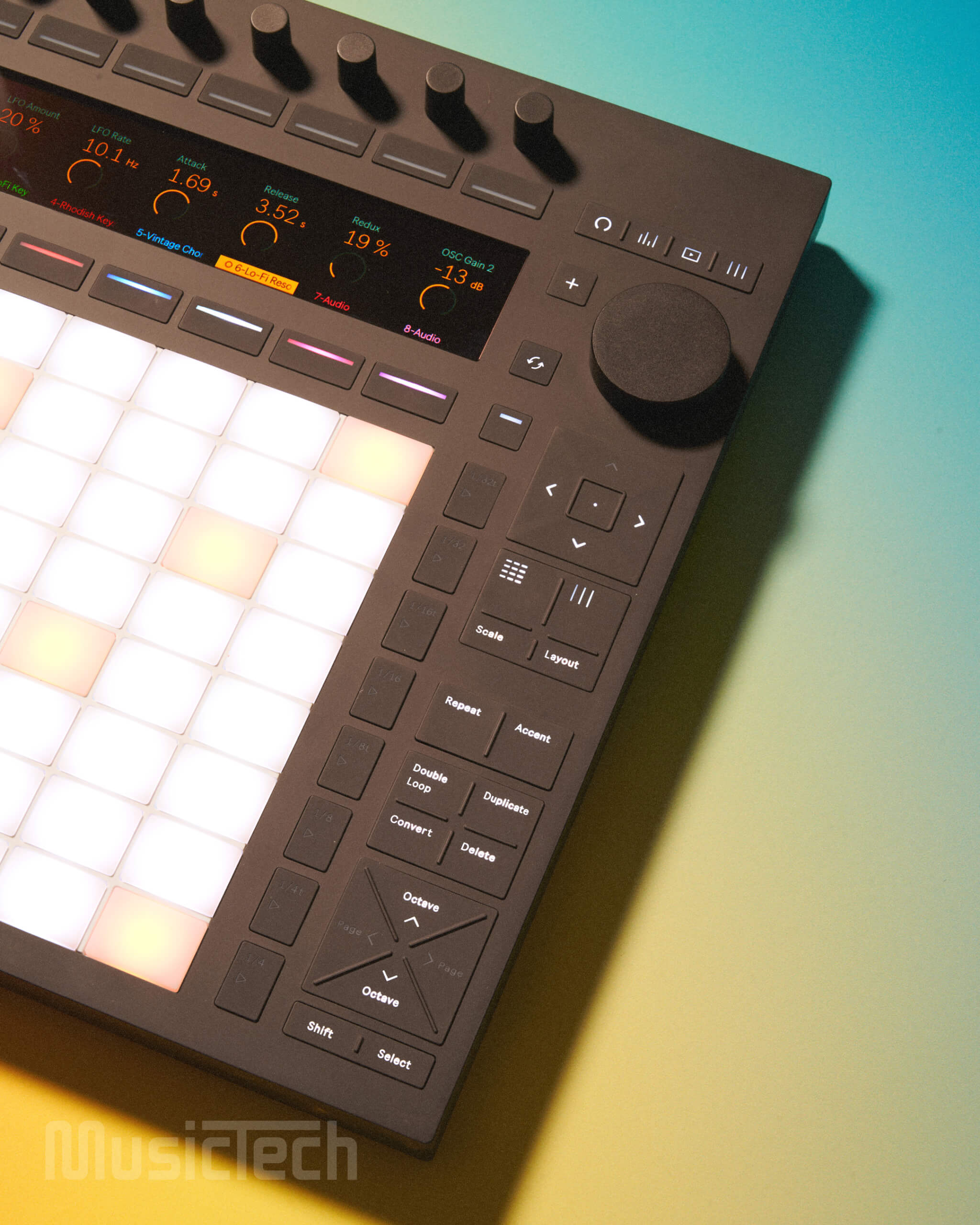
That same year, alongside former colleague Baptiste Grange, Jesse worked on developing the iconic Novation Launchpad, which rapidly triggered a lust for grid-based pad controllers.
“But we wanted something that went deeper into the creation part of things,” Jesse says. “The APC 40 was really about performance and we wanted something that would dive deeply into controlling and making drum patterns.”
“We knew that if we were going to go that deeply into the [Live] integration, we needed to be the ones designing it. So that’s why Push 1 was designed by Ableton, and engineered by Akai. Midway through making this drum programming sampling product, Gerhard [Behles] said, ‘You know, it should also do melody and harmony. And clip launching!’ And I was like, ‘Oh, great, okay. How’s that gonna work?’
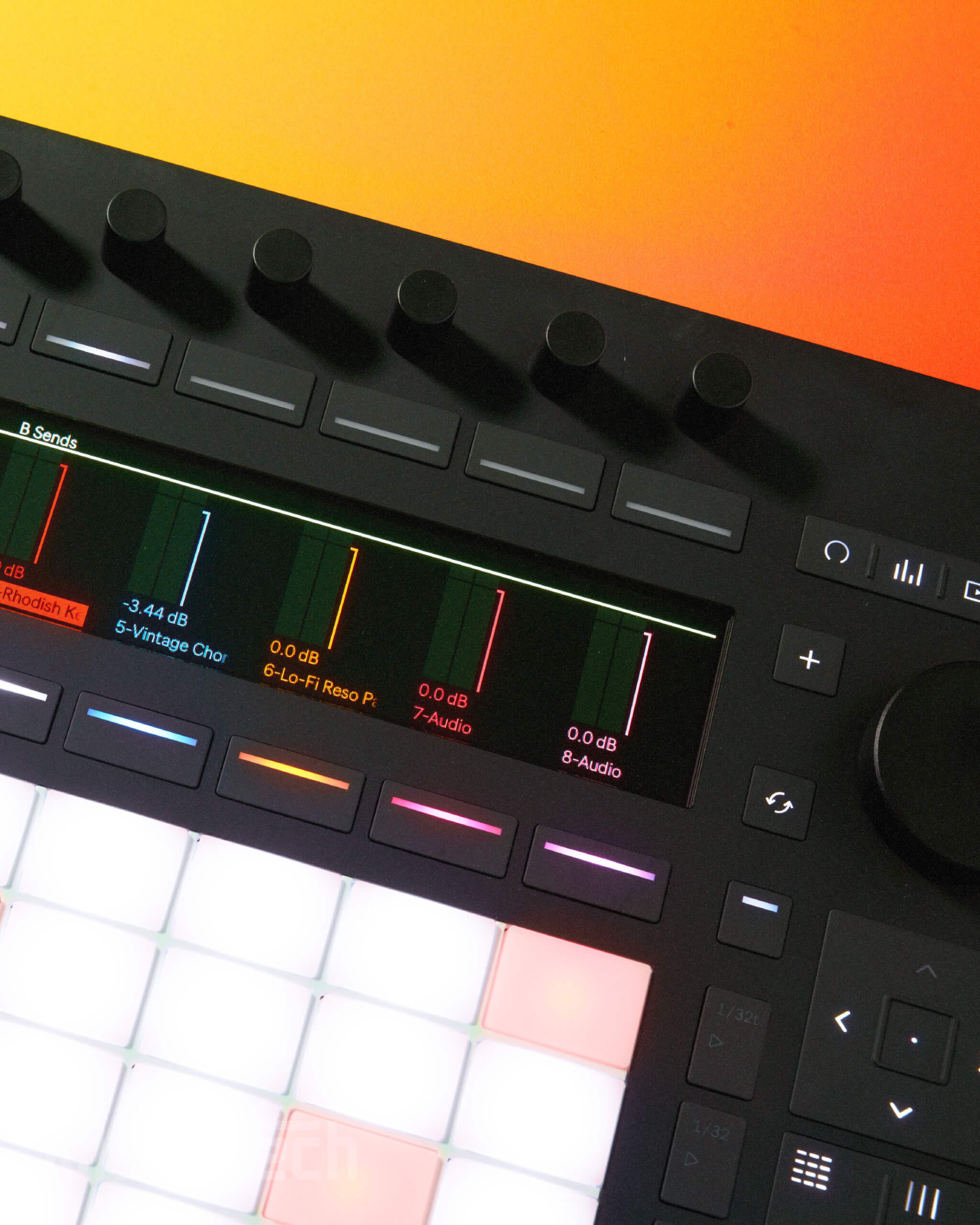
“So the idea started to go into a bigger eight-by-eight grid, velocity-sensitive pads that could work for drums, for step sequencing, and for playing melody and harmony. The combination of making beats via step sequencing, like a Roland TR-808, and playing pads like an Akai MPC…We looked at everything, and we love all this gear, too. ”
Push 1, released in 2012, introduced some of these concepts with 64 pads, an LCD display, clip launching, drum programming and chromatic playability. “We bite off little pieces because we can do that in a certain amount of time,” Jesse reiterates. “I think with Push 3, we’ve bit off a big chunk.”
Push 2 rolled around in 2015 – this time completely designed, engineered and manufactured by Ableton. This model sported an upgraded display, sample-chopping capabilities, and an overall streamlined workflow. But even before Push 2 was unveiled, Jesse and his team were thinking about the next generation.
“I mean, once again, we’re indebted to Roger Linn,” Jesse says, “for the MPC, but also for the Linnstrument, which was breaking ground on expressive pads.”
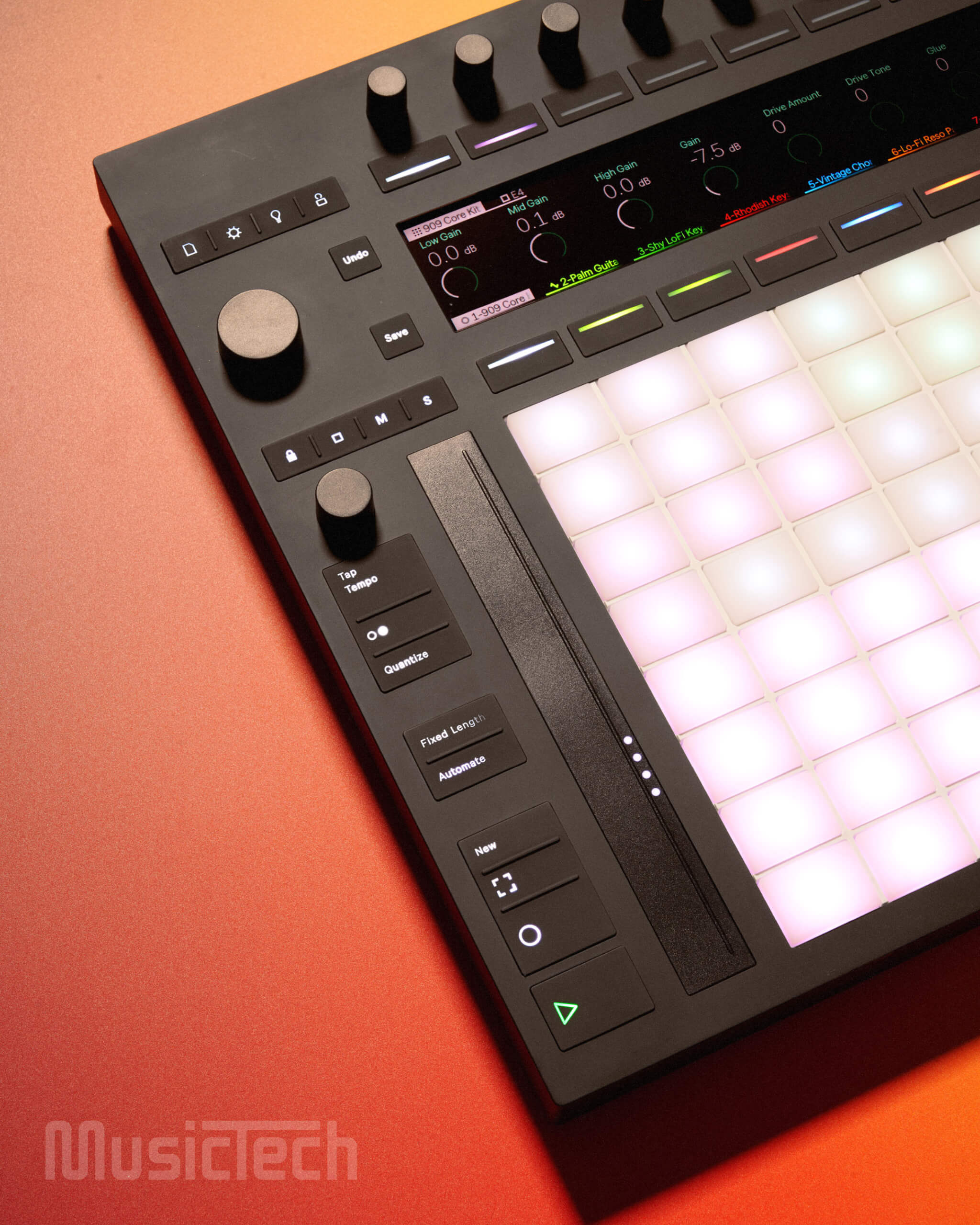
MPE – MIDI Polyphonic Expression – is rapidly becoming commonplace in music technology. Alongside the Linnstrument sits ROLI’s Seaboard series, Expressive E’s Osmose, Sensel’s Morph and more, all boasting MPE keys and pads to offer enhanced playability of synths and virtual instruments.
On Push 3, an example of MPE is pushing down on a pad, then moving your finger up and down to adjust a synth’s filter cutoff frequency. Or, trigger multiple hi-hat samples on one pad for a more realistic drum performance in which you’ll rarely make the same cymbal sound twice in a row.
For J Black, an aficionado of finger-drumming on Akai’s MPCs, says that Push’s MPE pads are “unbeatable” – but still aren’t enough to fully convert him to the instrument.
“You’re able to kind of do stuff that you’re not able to do with an MPC,” he says. “I can’t slap my fingers on the pads and do those pitch bends and stuff like that. [Push] won’t replace my MPC, but it’s just gonna have its own thing because it’s just a whole different instrument.”
A.Fruit says that Push’s expressive nature quickly gets her into a creative flow. “The first thing that got me into Push 3 was the pads. Using the MPE [for] drums…it’s more alive. There are more things you can control in this moment and you kind of feel more connection with it.”
Being able to swiftly browse through MPE instruments on Push is a blast. You can test out a drum kit and then, within seconds, be bending the strings of a virtual guitar instrument, and then manipulating a luscious synth pad. This is thanks to the plethora of built-in devices and new controls for the visual display.
However, many pundits have bemoaned the screen size and are pining for a display that can show more of an instrument and an arrangement. A.Fruit has an idea.
“I do dream of a bigger screen; I guess I’m not the only one. It would be easier to edit notes more precisely, like with a bigger piano roll, you know? Maybe someday, we will see a whole computer screen integrated into Push,” she laughs. “Or maybe it’ll even have a projector to put your session onto a huge screen?”

It might seem trivial on the surface, but Ableton and Jesse are acutely aware that producers yearn for a more visual way to transform loops into full-blown tracks.
“We hear it a lot,” he says. “There’s certainly work we need to do so that you can easily put together at least the sketch of a song. You’re never gonna get into the details of how you fade and automate in an Arrangement View on a monitor screen. But can we get to a place that’s closer to that? I hope so yeah, for sure. We hear that request loud and clear.”
Screen size might be up for debate, but one thing that Push’s user base seems thrilled about is its creative mechanisms.
“I’m more of a workflow person. So, when I make music, I just want to hop in,” J Black explains. “I’m totally a DAW-less dude. So I just like to turn on my machine. You know, grab some [sample] packs, and just start kind of getting creative, right? And the biggest thing is workflow – how can I get to that?”
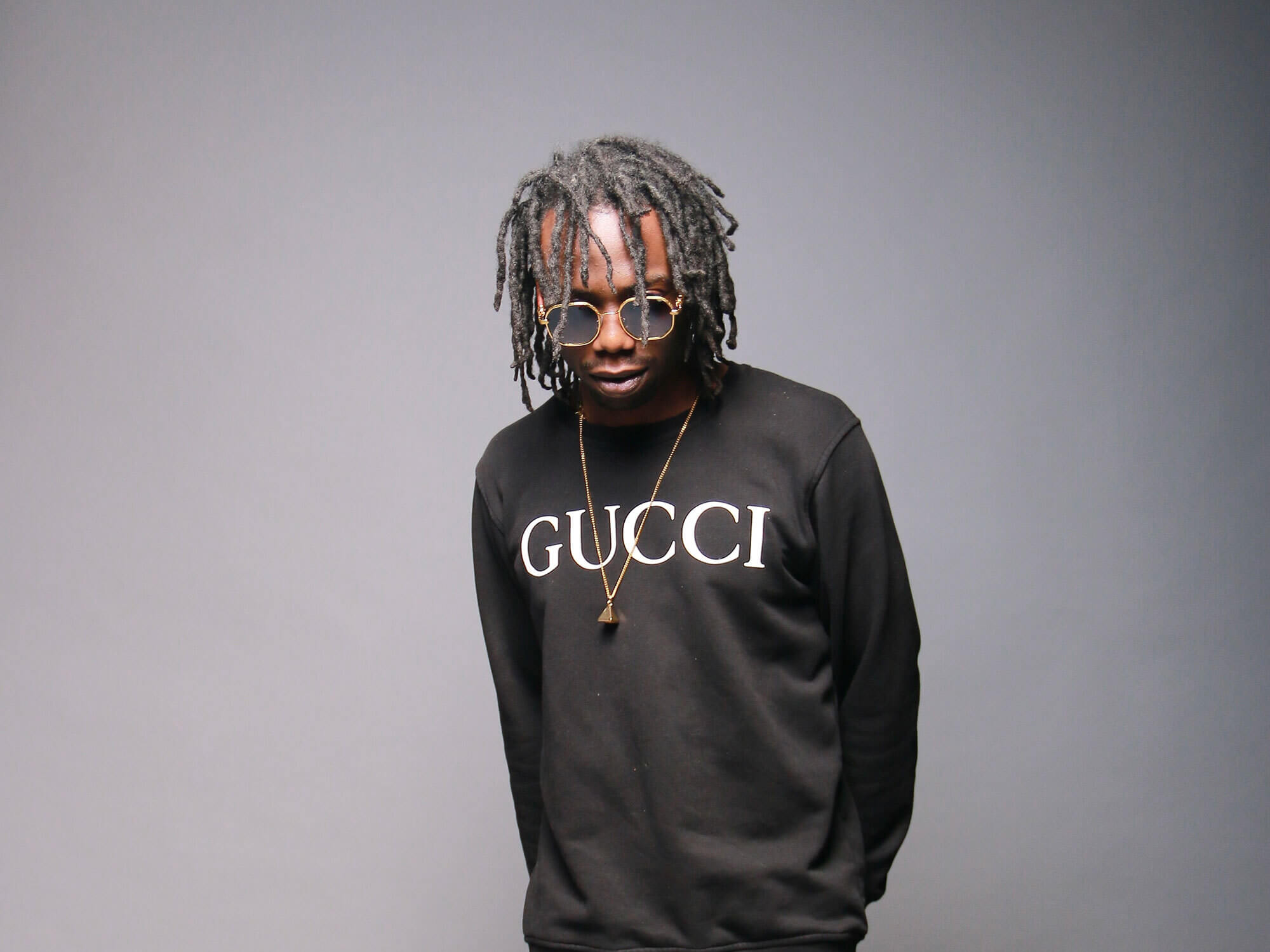
The beatmaker praises Push’s Wi-Fi connectivity, which lets him download and transfer samples on-the-fly, and the new built-in Warp Mode.
“I used to use Serato Sample a lot. One thing it has is a random mode, which chops up a sample at random points; I love that. With [Push], I can do that with all 64 pads. And they’re chops that, in my 12 years of producing, I wouldn’t have thought of chopping like that. Because, typically, people chop on the [first beat] or on the third, but on here it might chop on a weird timing, but it makes a cool sound. And it’s like, ‘Okay! I never thought about this!’ And I use that and it fits.”
Sample-slicing, and the new Autowarping Mode, is a major part of Push’s appeal. One unique quirk is being able to transpose a sample with glide and not interrupt its timing. Jesse says that, so far, this has been quite an underused feature.
Speaking on the Autowarping, Jesse recalls showing it to hip-hop samplers. Their reaction? “You don’t understand how amazing this is and how much time it saves you.” Jesse has calculated that, with the 40GB of samples he’s uploaded to Push, Autowarping has saved him from manually warping for over two months of his life.
“A producer asked me, ‘What are you going to do with those two months?’ Good question,” he chuckles.
These innovative and time-saving features may be inspiring and perhaps even invaluable. But there are still a few elephants in the room. Is the standalone Push really worth $2,000 – especially when it only ships with Ableton Live Intro? Is 2.5 hours of battery life enough? And why is the upgrade path from Push tethered to Push standalone so expensive?
The answers seem to point to Ableton’s vision of Push being a “timeless” instrument.
“For what you’re [paying], you’re getting something really strong,” J Black says. “That price is fair because it’s a modular system. So you can upgrade the battery, and [Ableton] said you can maybe update the processing in the future. I think that right there alone makes it already a high-grade machine, right? You can give this a terabyte [storage] and [Intel] i7 processor if you want to in the future, you know.
“I think that’s Ableton saying, ‘this is going to be the piece of equipment for a long time. We’re not getting another one anytime soon,” he concludes with a chuckle.
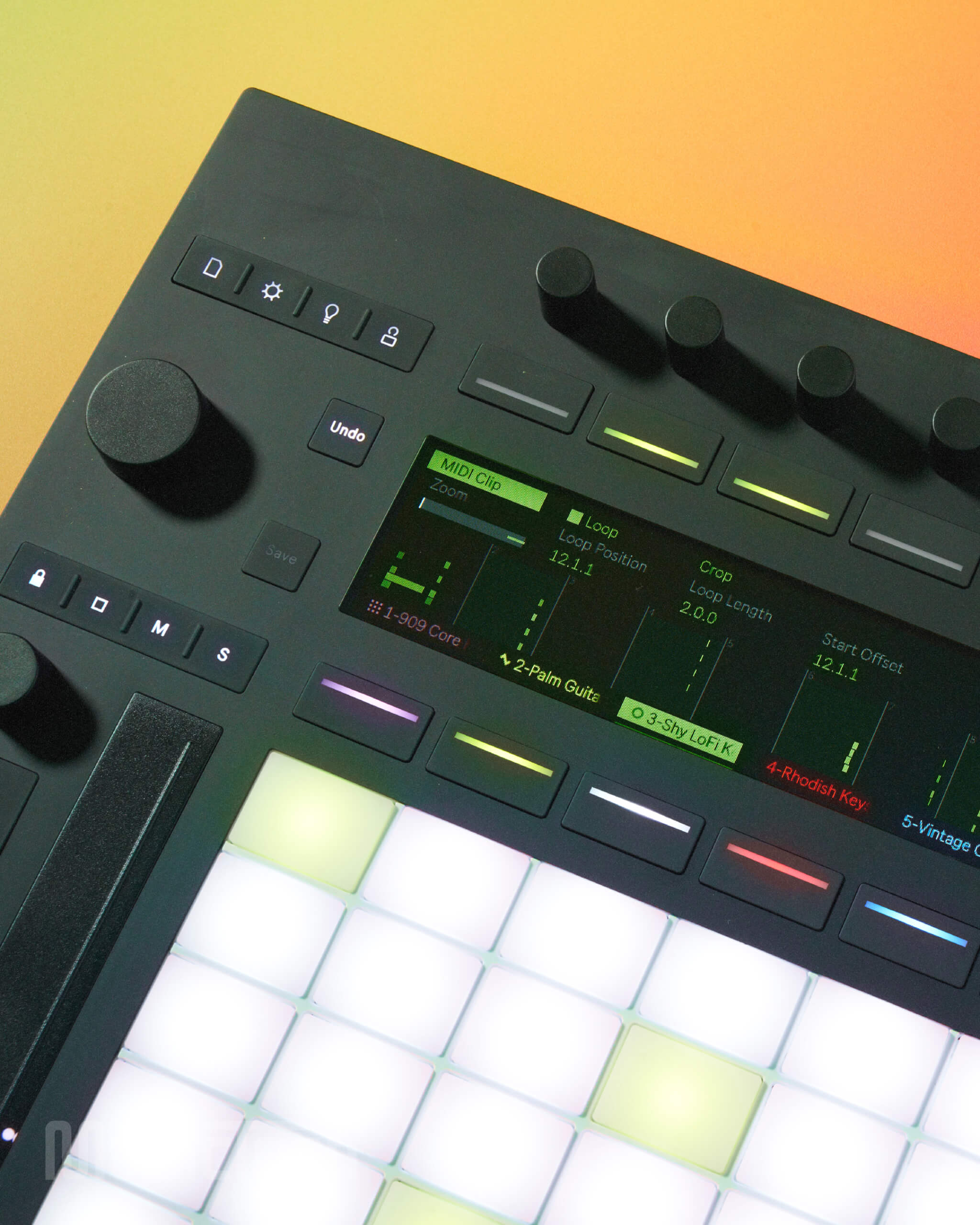
On the lack of Ableton Live Suite in the standard Push package, Jesse explains “I hear this. I’d say that many people who buy a Push already have Live Suite. We do offer a bundled discount if people want this. But this is the way our business model works for selling this product. I know it’s not a cheap product, but we’re definitely making less on this than, I’m sure, anybody else in our industry does – in terms of margins.
“At the same time, Live Intro can give you a really powerful standalone product. Even though it’s limited in the instruments, it does have presets built on those instruments, so you have a huge palette. And with 16 tracks, you can get a lot of your music done.”
Is Live Intro and 2.5 hours of battery life enough to get your music done on the go?
“In an ideal world, Push would last 100 hours and be super lightweight.” Jesse replies. “We didn’t use a lithium-ion battery for safety reasons. With a battery that size, we wanted to make sure that it’s not giving anybody problems. So we use a lithium iron phosphate battery, which should have 10 times the number of charges that lithium-ion would have.
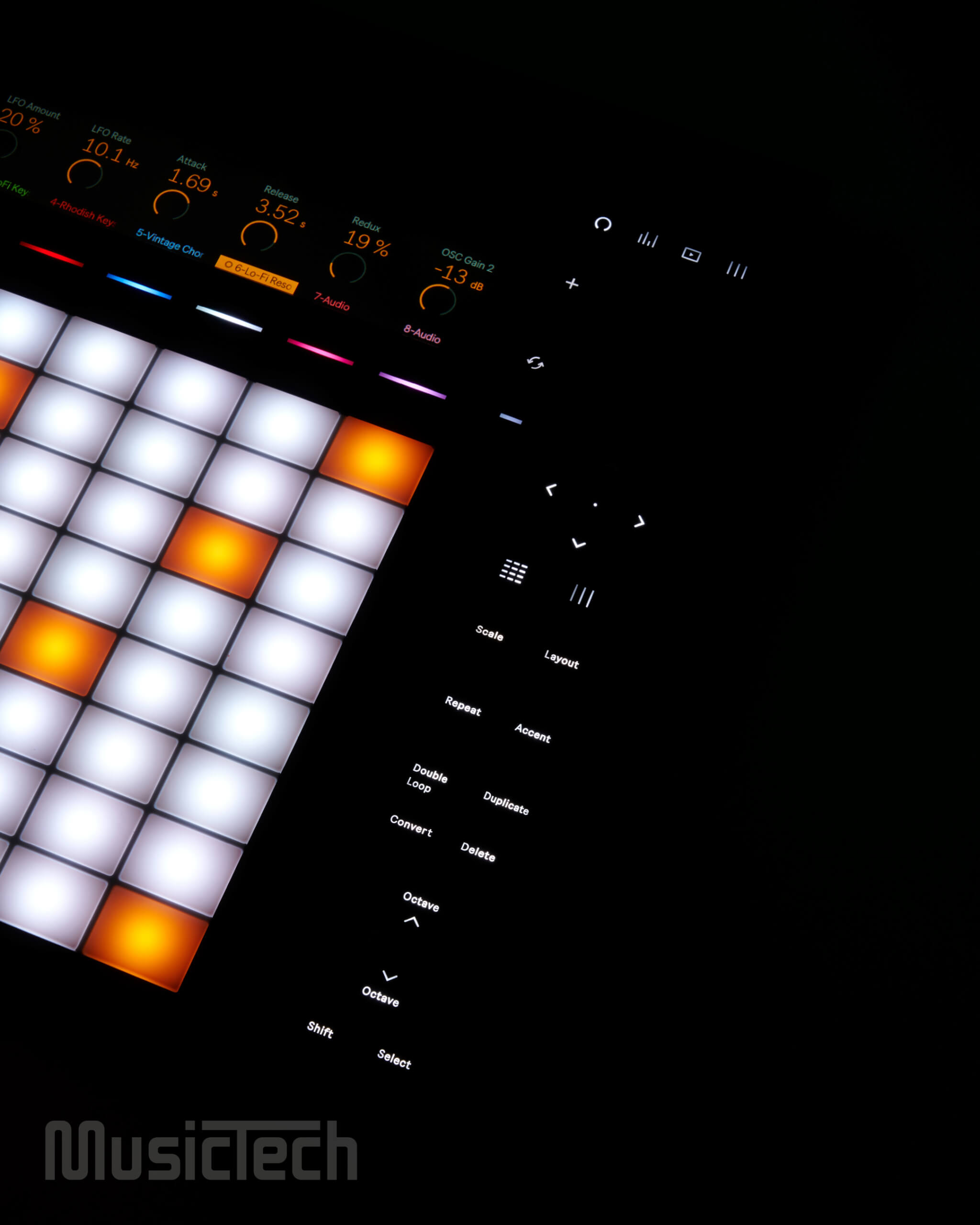
“People want to go LA to New York, is what they told me. And I’m like, ‘Well, we did the best we could with the technology we have.’”
Push may not be designed for long flights and extended performances, but A. Fruit can picture herself jamming at the park with her friends. “It’s really nice for musicians who play live. Now we can just delete the computer from our setup.”
But here’s the rub: if you’re only willing to fork out for Push tethered, deleting the computer from your setup will set you back another $1,049.
“These parts – the battery, the processor, the hard drive – are not cheap at all,” Jesse explains. “We’ve even changed our distribution model to make these as affordable as we can.
“For people who aren’t sure about the decision [between tethered and standalone], we give them the option to make this decision later. That’s one-half of it. The other reason that we wanted it upgradeable is, [in a few years], we could have a new instrument that takes more processing power. We want to make sure that this product can have a longer lifespan, which I think is the opposite of planned obsolescence. That’s our goal – that Push is a product that will last a long time. We see a lot of the opposite of that in our industry and we don’t like it.”
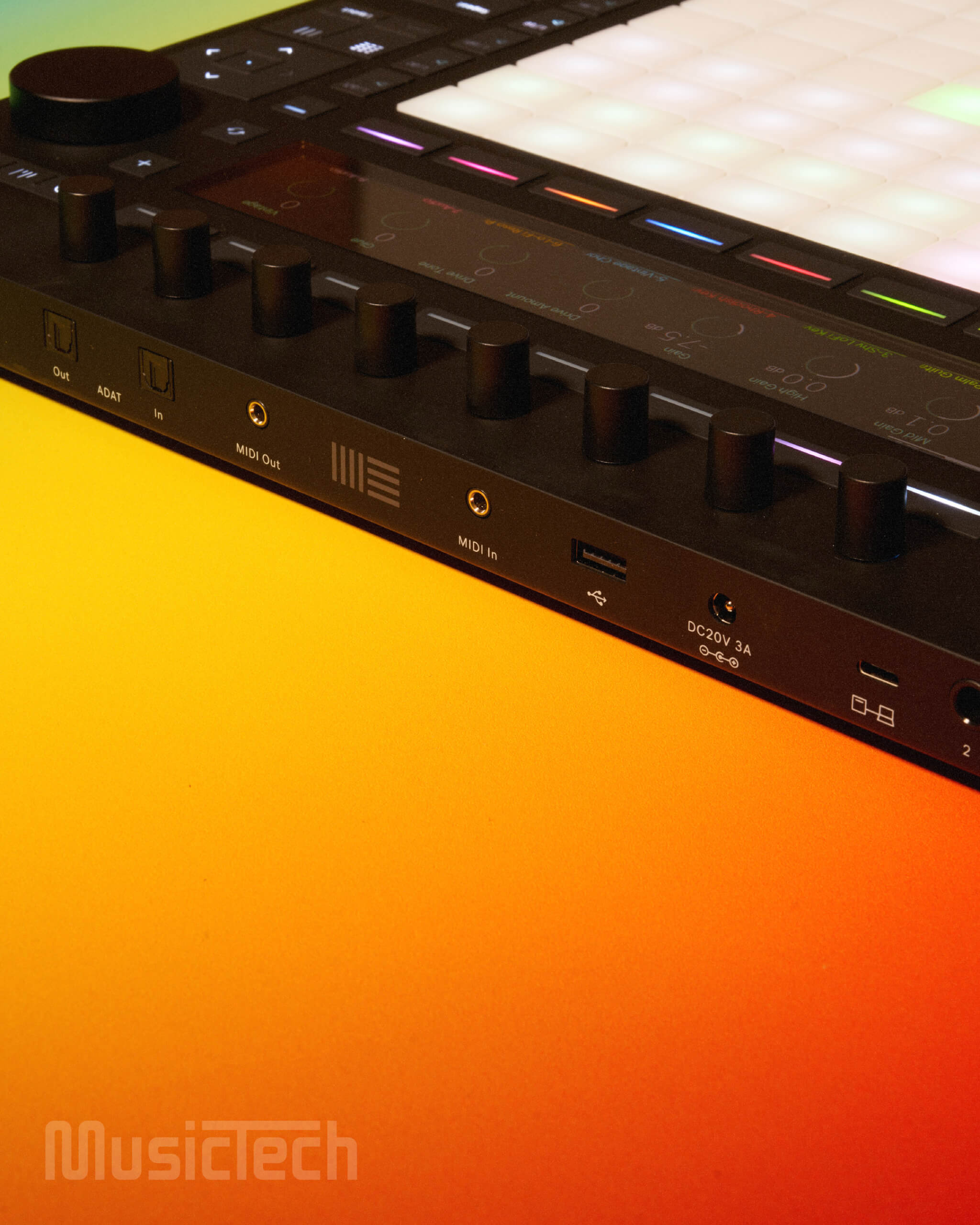
With such a long shelf life ahead of it, Push will no doubt have plenty of hurdles to overcome by way of new technologies. Indeed, plenty of users have already submitted “a long list” of feature requests, according to Jesse.
J Black and A.Fruit certainly have their requests at the ready – from A.Fruit’s projector idea to J Black pining for a Launchpad-esque light show function and an “Ableton Push Pro”. For now, though, both seem content in the creative opportunities it affords them, even down to its fun ability to auto-generate names for a saved project. A.Fruit believes that “even children can use it if you show them.”
Jesse is probably already working on the next set of features for Push. He and his team may even be tinkering with a new software update as you’re reading this. Whether Push is ready for your studio or not, Jesse feels a strong sense of accomplishment – and probably deserves a well-earned rest.
“Gerhard said that the work on this project was ‘tenacious’. A product that took this long through a pandemic, and actually getting it to the finish line, took a lot of tenacity from the hardware and software team. We had to deal with different modes of working – being stuck at home, and not being able to visit our factory – and get through all these technical challenges, questions and decisions. Like, that took a lot of perseverance for all of us. And that makes me proud.”
Find out more at ableton.com.
